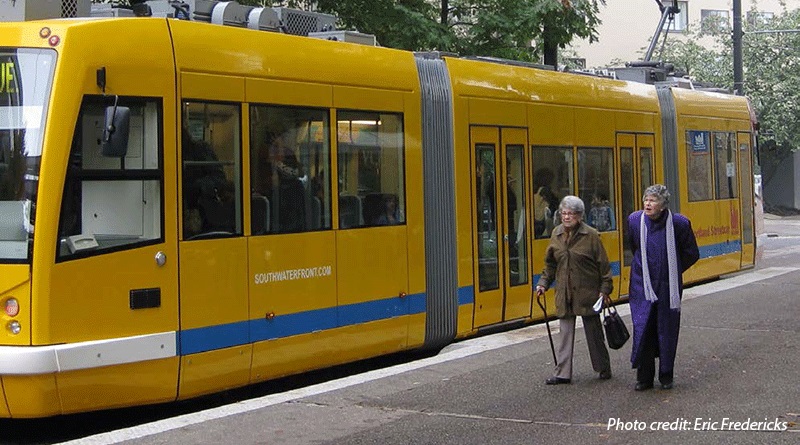Moving an Age-Friendly DC: Transportation for All Ages. (2014)
Erin McAuliff, with oversight by Cheryl Cort, and assistance by Stewart Schwartz and Alex Posorske, Coalition for Smarter Growth
In Moving an Age-Friendly DC: Transportation for All Ages, the Coalition for Smarter Growth evaluates transportation for seniors in the nation’s capital and encourages the District and WMATA, the region’s transit agency, to undertake policy and planning initiatives to ensure that an aging population can continue to fulfill its housing, shopping, recreational, and personal needs. The report focuses on three types of transportation most frequently used by seniors: public transportation, alternative specialized transportation, and walking, which the authors cite as particularly important, writing that “every trip starts and ends with a walk trip.”
The changing demographics of Washington, DC, have elevated the importance of meeting the transportation needs of senior residents. Seniors now account for 11.4 percent of the District’s population, up 4.5 percent since 2010. This group is the least likely to own a car, and many of their transportation needs are met by riding public transportation and walking. While Washington, DC, has taken many steps toward improving these modes of transportation – including WMATA’s commitment to using only low-floor buses by 2016 and the District’s establishment of the Age-Friendly DC program in 2013 and its focus on making safety improvements at dangerous intersections, Moving an Age-Friendly DC identifies areas to make additional improvements beyond these initial steps. One frequently cited recommendation calls for agency coordination to ensure senior housing and public transit stops are no more than a quarter mile apart to ensure convenient and safe transit access.
This level of coordination is especially important when considering the role transit-oriented development can play in providing options to different populations, including seniors. In addition, the report also recommends prioritizing sidewalk ADA-compliance and maintenance because trips to transit stops involve walking. To improve public transportation services, the report recommends that all bus stops be made accessible (only 31 percent currently are), and that elevators and escalators at Metro stops receive timely maintenance. This helpful report can provide a template for many other stakeholders – including local and state governments, transit agencies, and senior community service providers or representatives, to name just a few – as they work to meet the needs of their aging populations.

